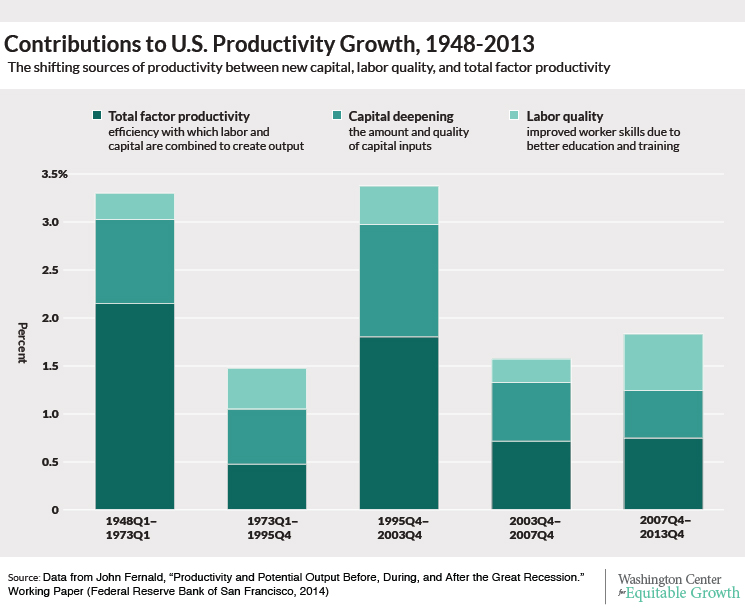Mark Thoma directs us to Paul Romer. And Paul Romer gets remarkably exercised about George Stigler’s long and successful war against the use of the theory of monopolistic competition in economics, with its consequence that even today we have “scientifically unacceptable” people who say:
We will never, as a matter of principle, consider a model in which there are ever any monopolies. We will dogmatically stick only to models of price-taking competition…
From my perspective it is not the contemporary implications of this train of thought for growth theory that are important–for as best I can tell there are people who write growth models where every market has price-taking competition but there is nobody outside who reads them–but rather the historical implications of this train of thought for industrial organization, antitrust, and the rise of the rent seeking sector in the American economy.
I eagerly want to read and hope to see more work in this area.
And there is something to be written about people who employ arguments based on ideological triggers. For them, certain arguments have force only when they lead to ideologically-convenient conclusions. We see this perhaps most strikingly in the Neoconservatives. Their core argument that government needs to be cautious, hesitant, and to focus on nudges rather than commands because (a) implementation is very hard, and general equilibrium effects are (b) often very large and (c) always very hard to predict. But, somehow, this argument applies only when the government is attempting to secure the natural rights of African-Americans, or women, or homosexuals. When the government is trying to stomp Commies or Arabs then, by contrast, they gravitate to arguments for an aggressive forward policy to secure “democracy”. Max Weber dealt with such people in his day: His line was: “the materialist interpretation of history is not a streetcar that one can get off of anywhere one likes.“
And, yes, all of what I call “Chicago Economics” does seem to be like that today–although very little of it was back in the 1930s…
Via Mark Thoma, Paul Romer:
…has to be judged a failure from a scientific perspective. In particular–and I apologize if this relies too much on the jargon of our field–monopolistic competition turns out to be just the tool for understanding…. (It also turns out to be the tool for understanding international trade, economic geography, and macroeconomics.) But there has been a series of models that are associated with the University of Chicago–from what some people call the freshwater camp in macroeconomics–that are continuing a fight that George Stigler started in the 1930s to keep monopolistic competition from being used in economics. It is hard to explain to an outsider why a whole group of economists have ended up on the wrong side of scientific progress, resisting the direction that all of modern economic theory is taking, but they are.
In the economics of ideas, we have to be willing to at least consider the possibility that someone could have some control over an idea, hence some monopoly power associated with ideas. This could come from patent or a copyright. It could also come from secrecy. Then we can ask if it is a good idea or a bad idea to have more intellectual property rights or more protection of ownership of ideas. We know that the answer here is mixed. Sometimes some amount of it can be good, but it can also be harmful if the property rights are too strong or are given to the wrong types of ideas. But if you don’t even allow for the possibility of ex post monopoly rents from the discovery of ideas, you can’t even ask the question.
So it is scientifically unacceptable to have people who say:
We will never, as a matter of principle, consider a model in which there are ever any monopolies. We will dogmatically stick only to models of price-taking competition.
I think this an untenable scientific stance. I don’t think that this critique is going to reignite interest in growth theory. But like I said, when it’s time for interest to come back, somebody have a new take on growth theory, and work in this area will start again. But in the meantime, we have to stop tolerating work that is scientifically unjustifiable.

